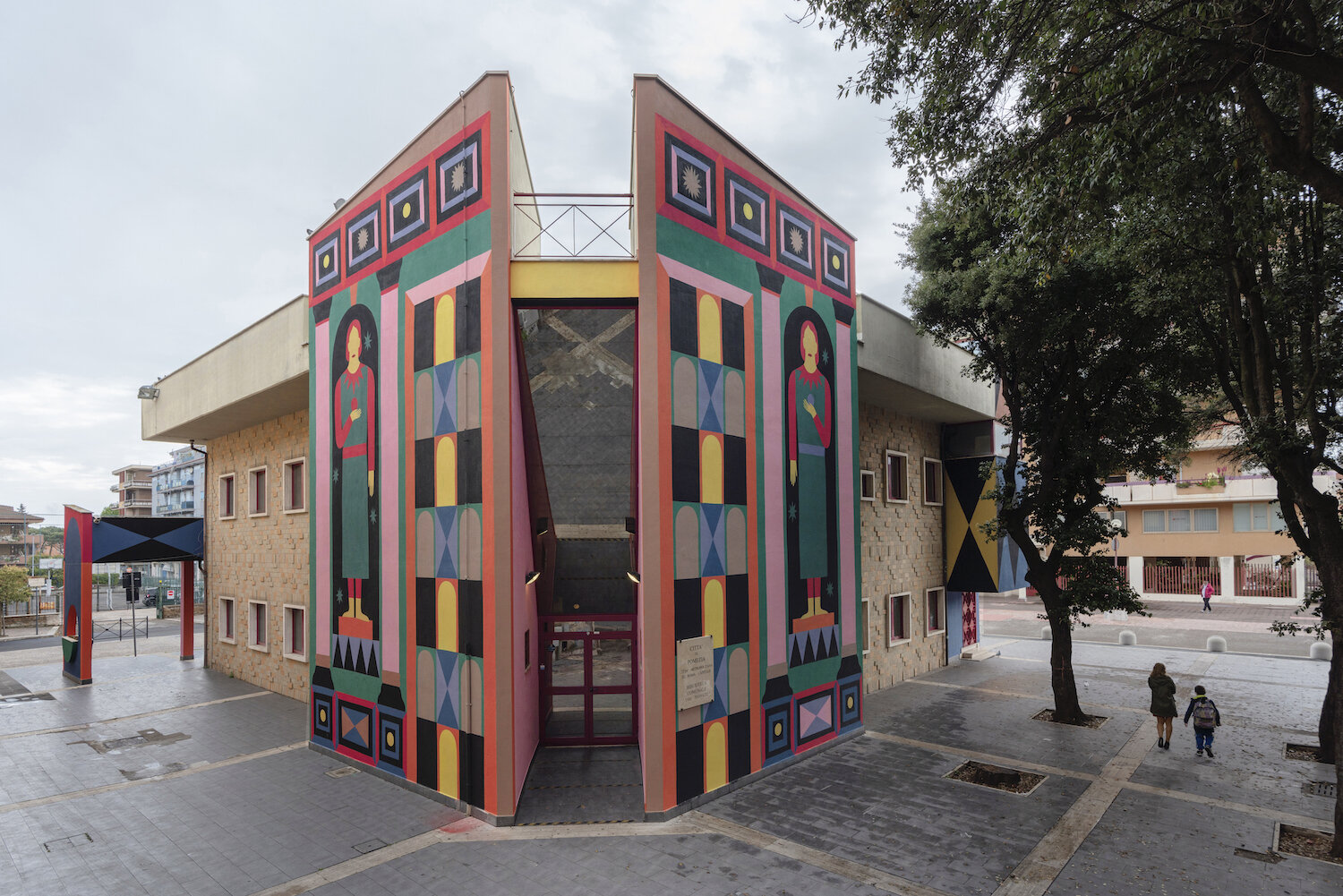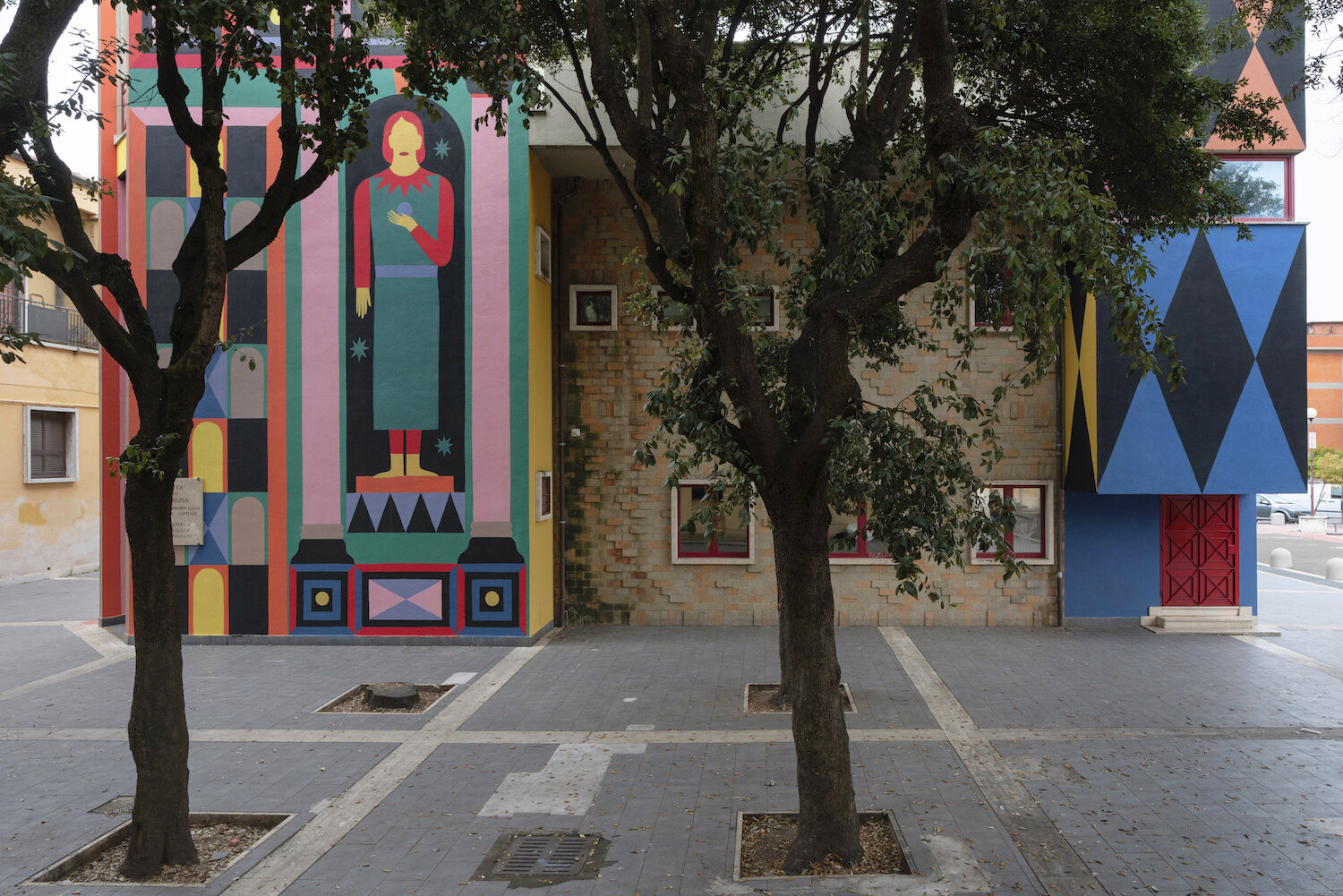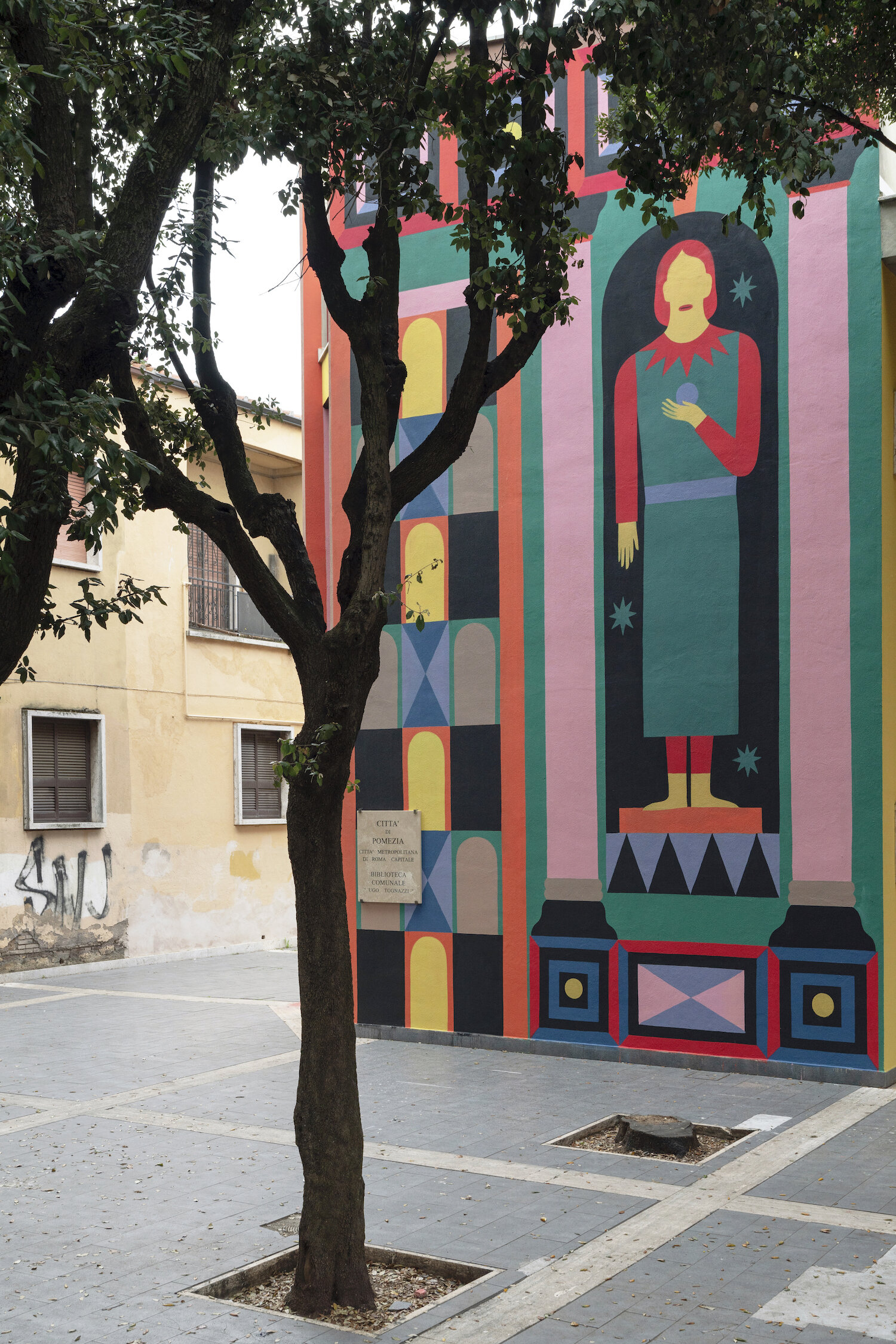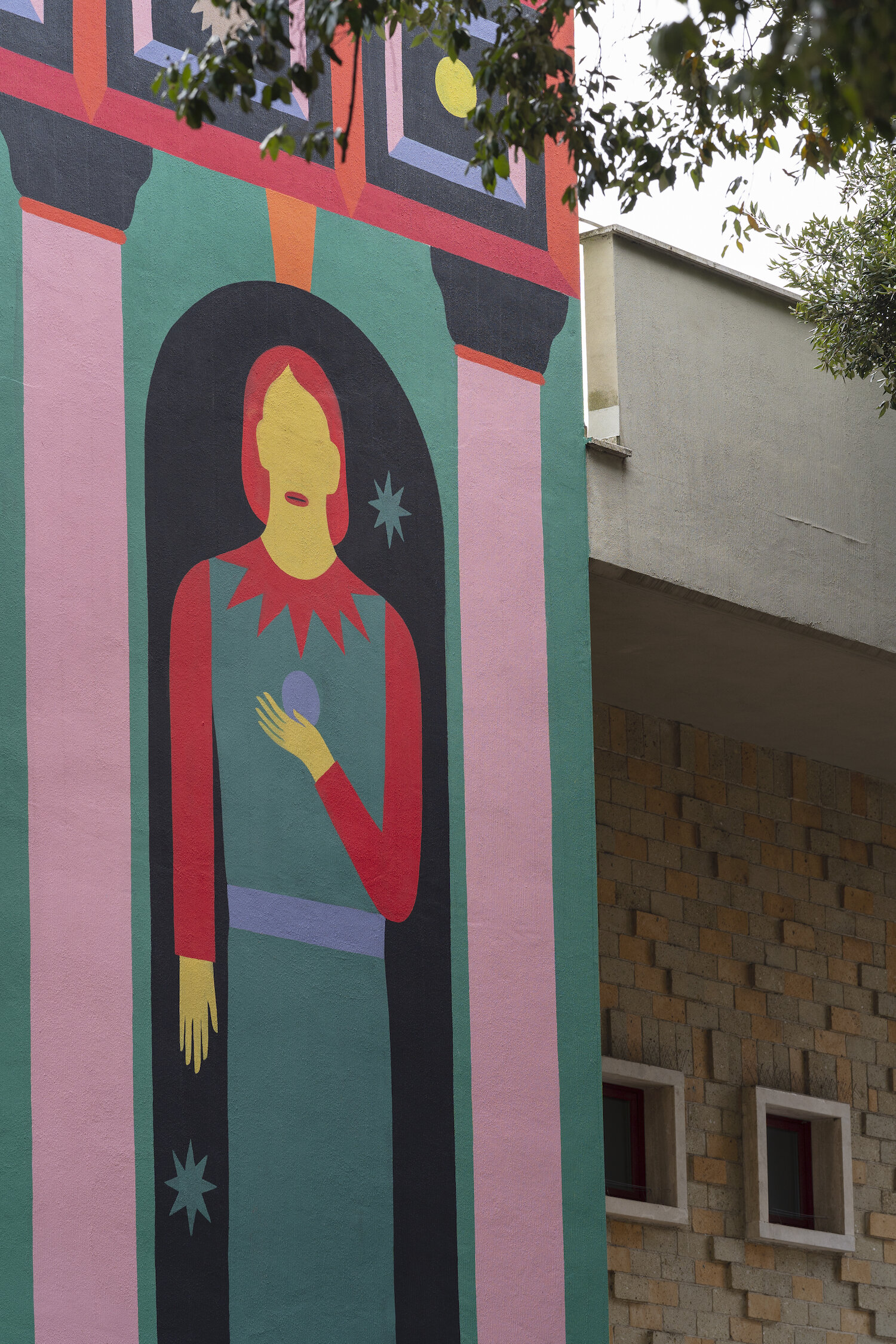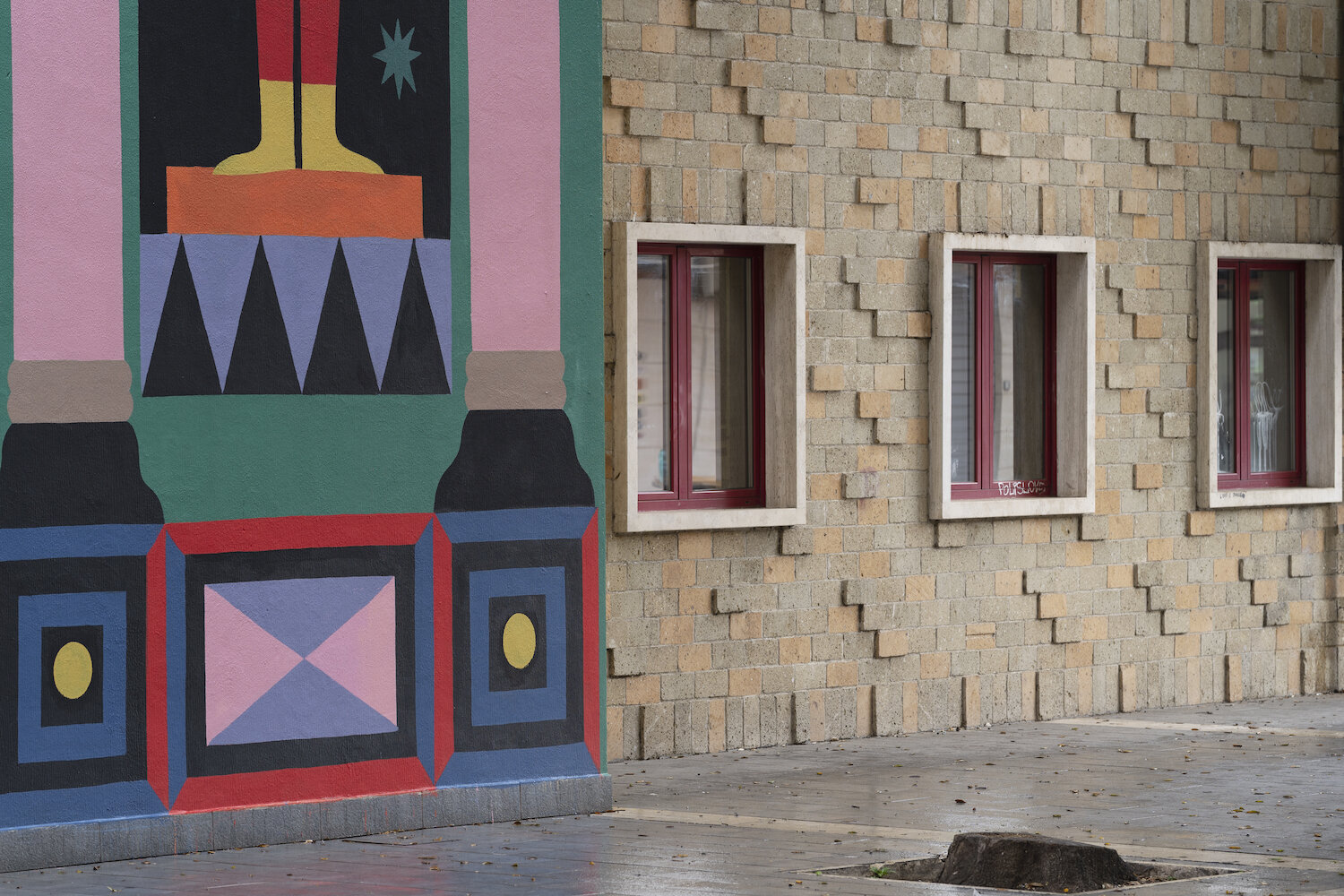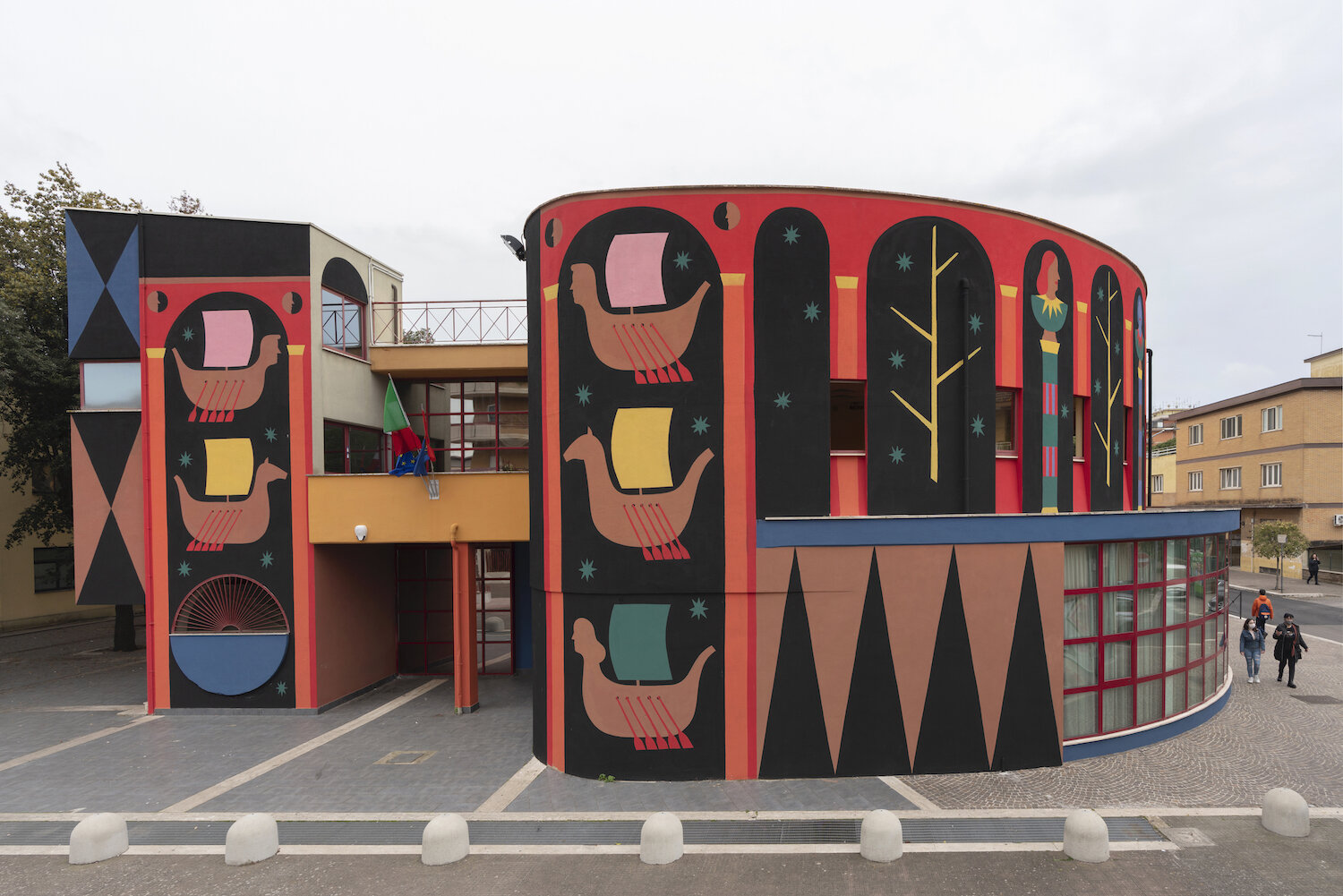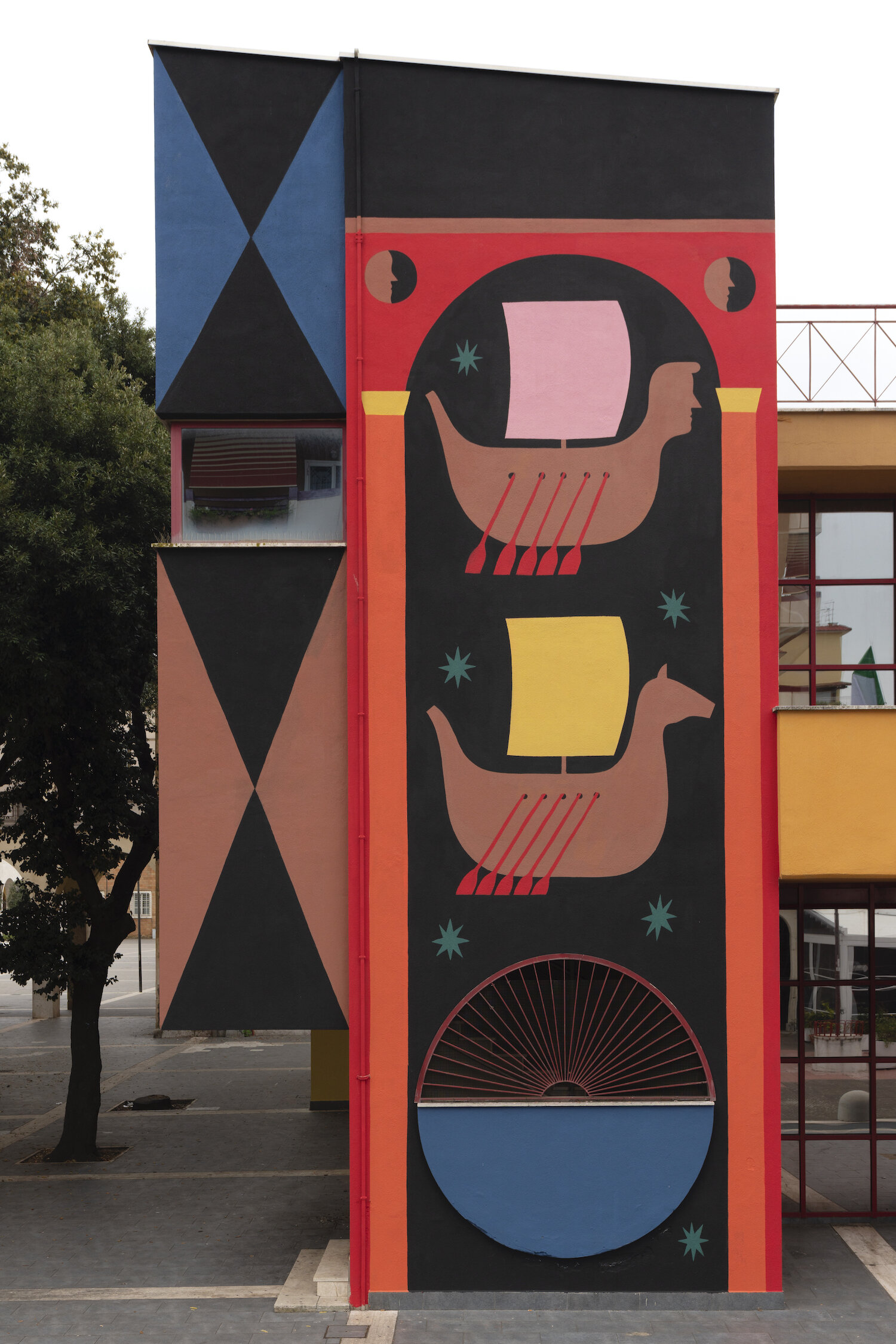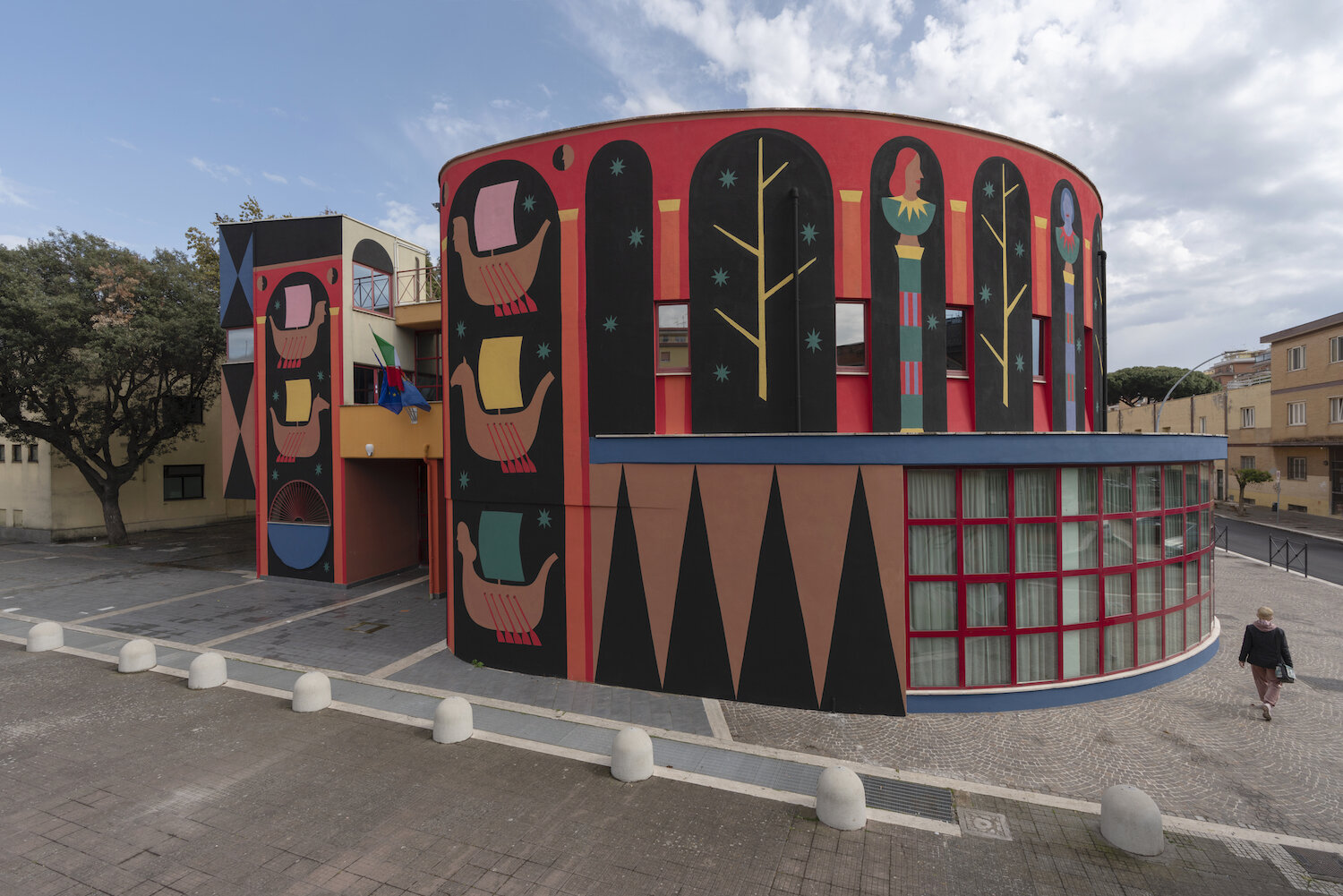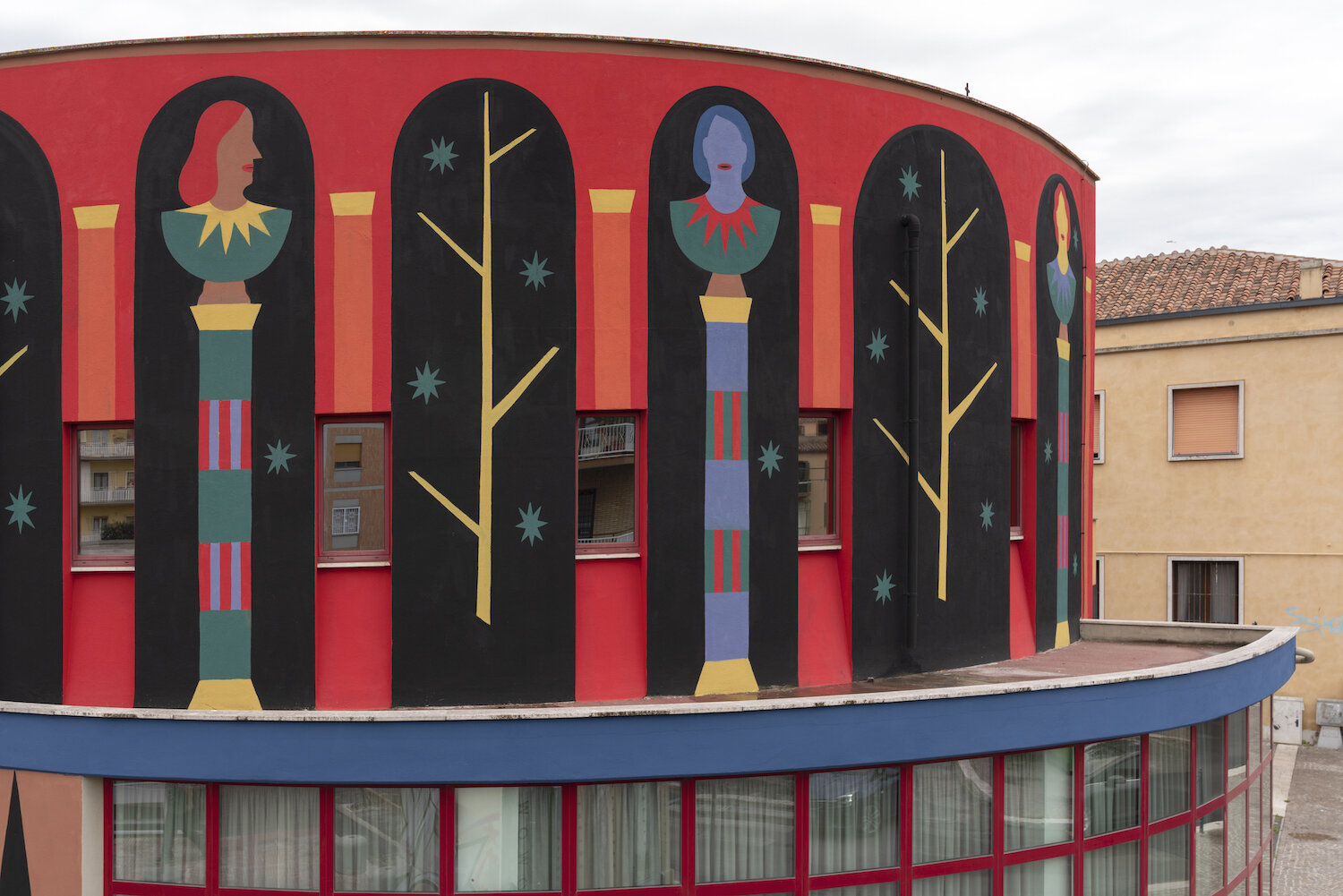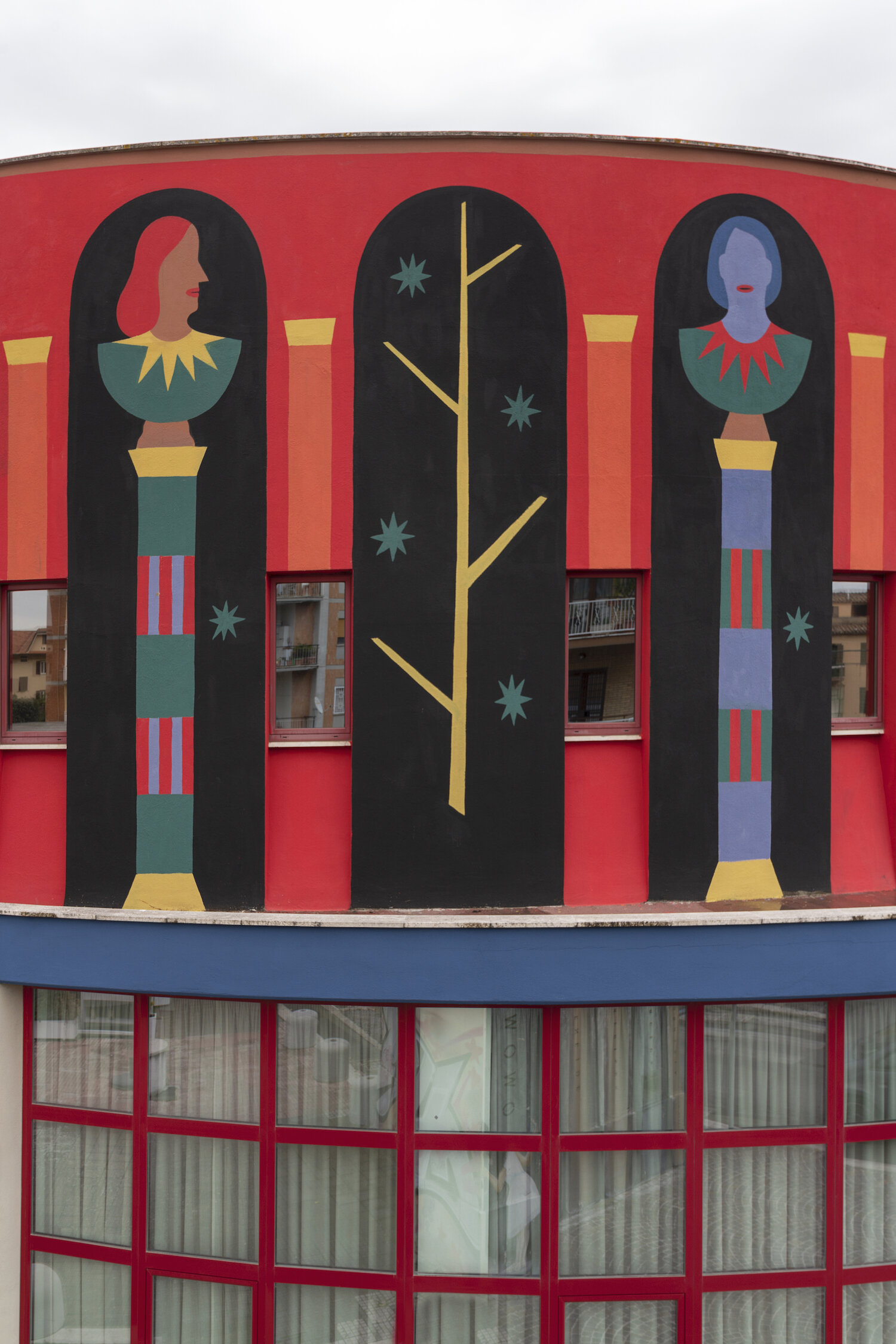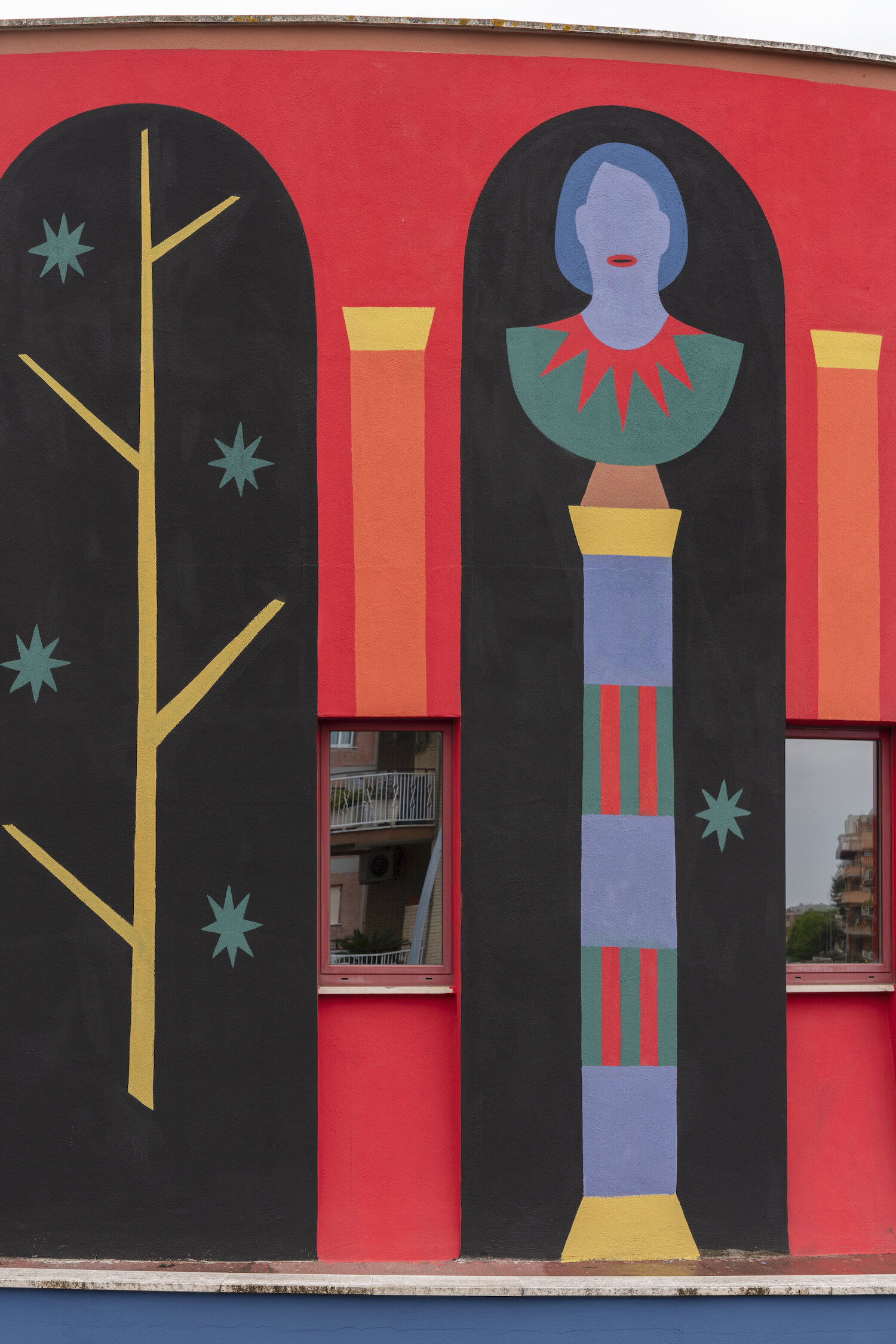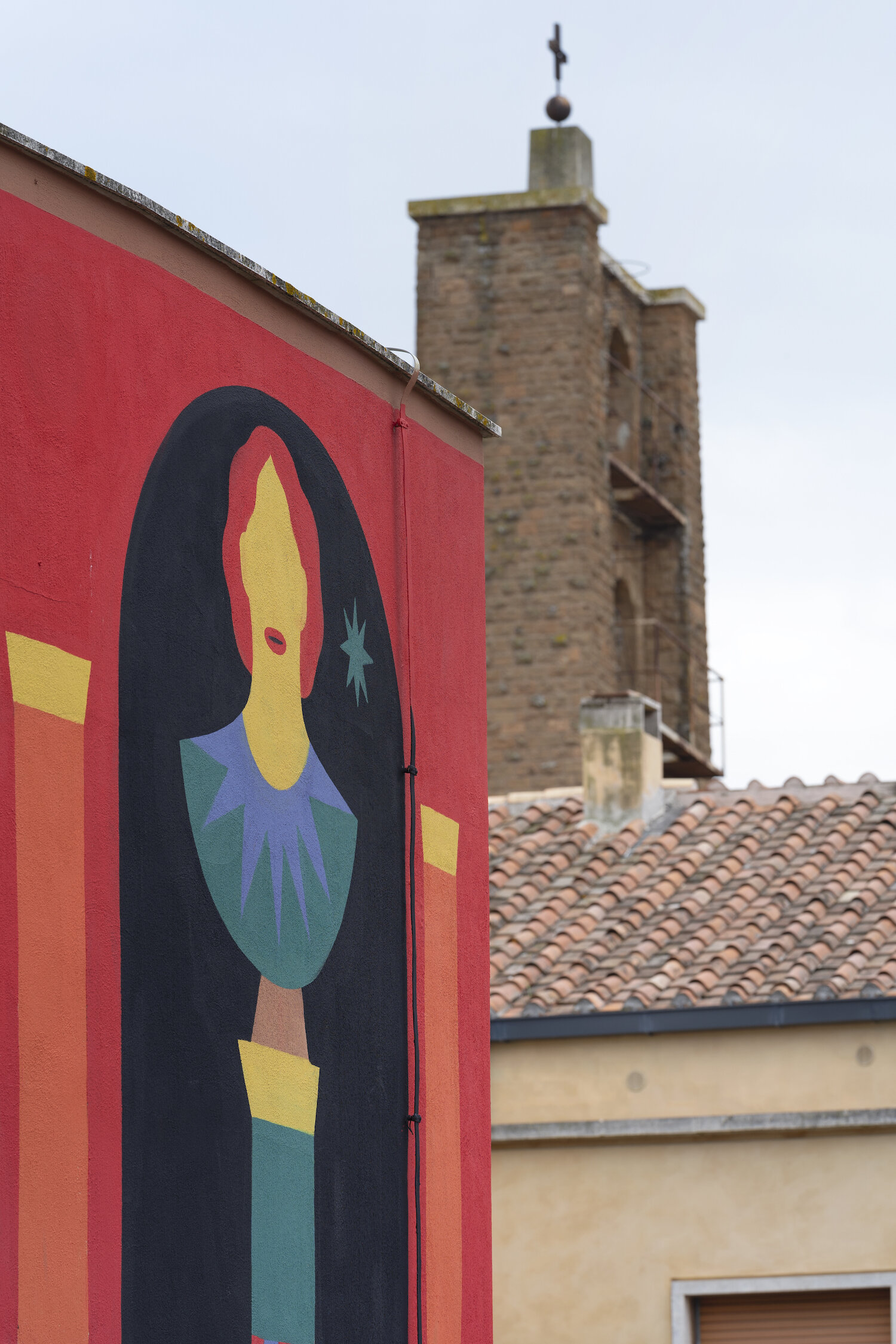L’antiporta
Paint on wall, dimensions variable
Biblioteca Ugo Tognazzi, Pomezia, 2021
Curated by Marcello Smarrelli and Pastificio Cerere for Sol Indiges.
Photo: Lorenzo Palmieri
Cover photo: RiGymnasium-Fotoarchitetto
“L'antiporta” is the title of the large mural (approx. 700 sqm.) designed according to the architecture of the municipal library of Pomezia, proposing a new reading and a new role in the path of the city.
The antiporta is the architectural element that precedes the access to a second door, and at the same time it indicates, in typographical jargon, the page preceding the title page, especially in old books, which often contains a portrait or an allegorical illustration.
The main iconographic source that inspired the work is the book VI of the Aeneid, which narrates the encounter with the Cumaean Sibyl, the seer who predicts Aeneas's landing on the Latium coast. Her cavern is described by Virgil as a cave with a hundred doors that open automatically and simultaneously at the moment of the response. The thresholds leading to the underworld as well as the mysterious tufa door of Aeneas's Heroon preserved at the Archaeological Museum "Lavinium" and the doors crossed by Virgil and Dante in the Divine Comedy, are all literary references which have guided the realisation of the large pictorial cycle. Hence, the access to the library is amplified by the symbolic function of the paintings which turns the building into a “temple of knowledge”, a lay oracle of the city, and a privileged place where to get answers to questions.


